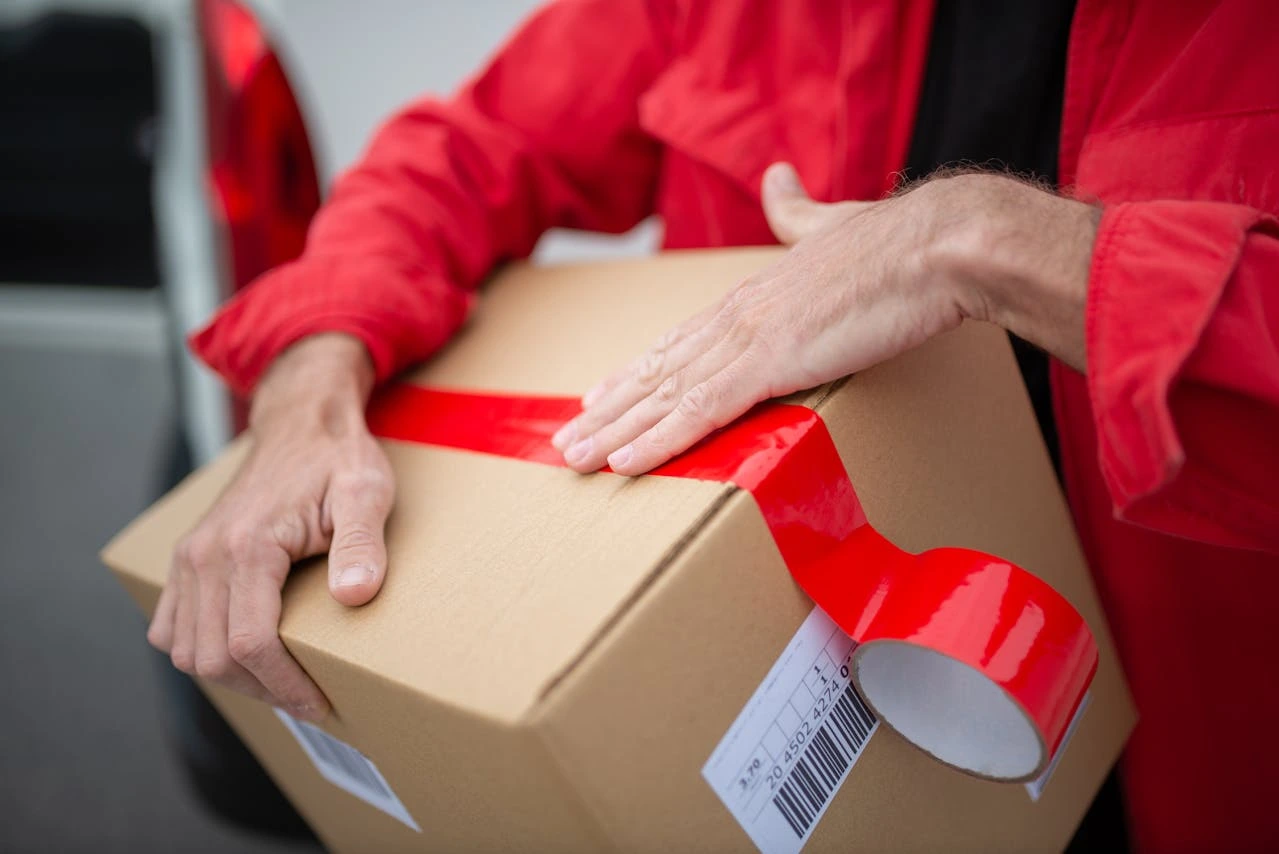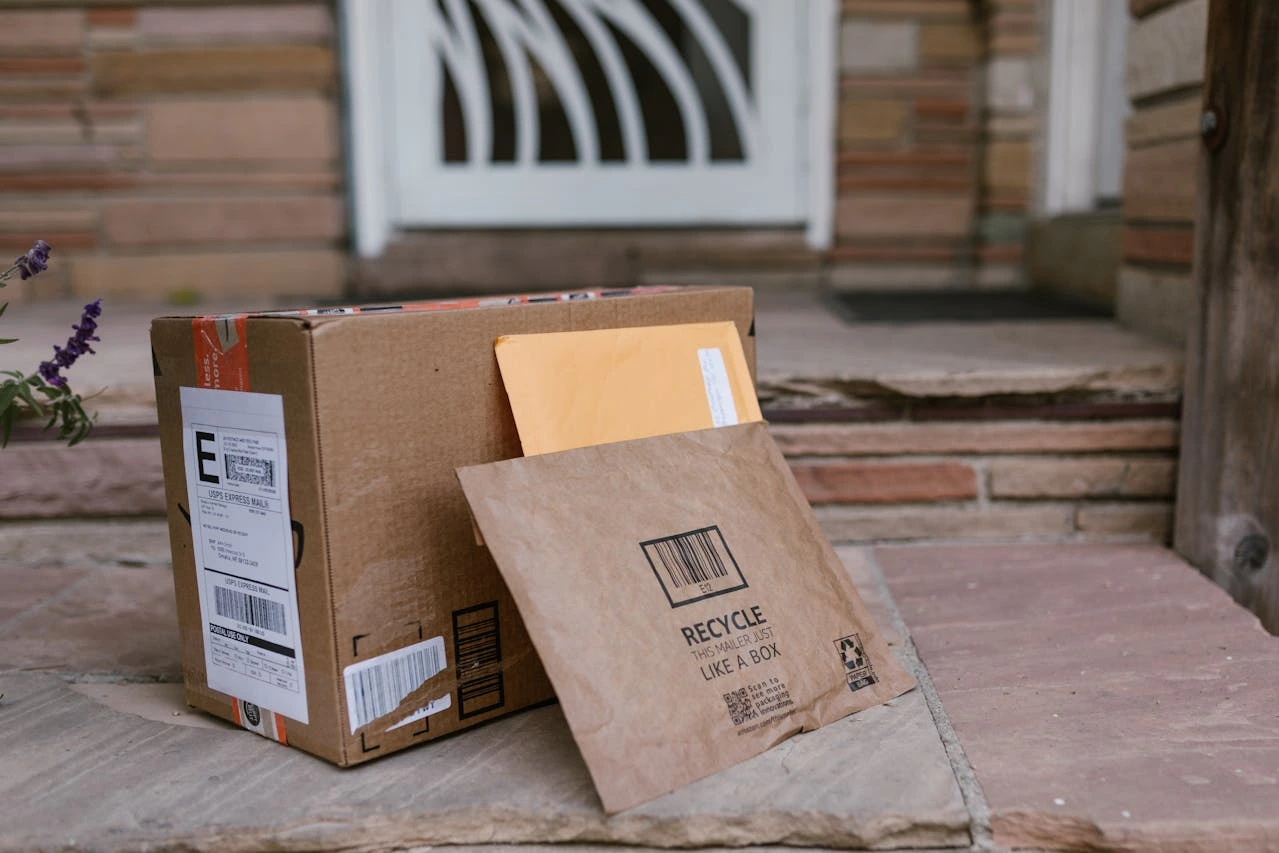In the booming world of eCommerce, efficient order fulfilment plays a vital role in business success. Whether you are an eCommerce startup or a seasoned business owner, learning and mastering eCommerce fulfilment is crucial for customer satisfaction and business growth.
In this blog, we’ll explore:
- What is eCommerce Fulfilment?
- What is Order Fulfilment in eCommerce?
- How Does eCommerce Fulfilment Work?
- eCommerce Fulfilment Methods
- Why is eCommerce Fulfilment Crucial for Online Business Success?
- Key Components of eCommerce Fulfilment
- In-House vs. Third-Party Fulfilment (3PL)
- How to Choose an eCommerce Fulfilment Partner?
- Technology That Powers eCommerce Fulfilment
- Common eCommerce Fulfilment Challenges
- The Future of eCommerce Fulfilment
- eCommerce Fulfilment FAQs
Trusted to deliver millions of items yearly, James Cargo Fulfilment fulfils orders across B2C and B2B channels worldwide. Our fulfilment services leverage global facilities in Europe, Asia, and the USA to ship faster, reduce costs, and expand your reach. Get a quote today!
What is eCommerce Fulfilment?
eCommerce fulfilment, as the name suggests, is a system for fulfilling online orders. It includes all the processes involved in the logistics side of completing an online order.
Generally, it covers
- Inventory storage
- Order processing
- Picking and packing
- Shipping
- Returns management
What is Order Fulfilment in eCommerce?
Order fulfilment is one of the most important parts of running an eCommerce business. Order fulfilment in eCommerce is the entire process of getting an online order to handing over the product to the customer. Robust order fulfilment grows your eCommerce business by avoiding delays and delighting customers.
How Does eCommerce Fulfilment Work?
As you have learned, eCommerce fulfilment is the process of fulfilling customers’ orders. Here’s a step-by-step breakdown of how does eCommerce fulfilment work:
1. Receiving Inventory
- Receiving goods from suppliers/manufacturers.
- Inspecting, logging and storing stock in a warehouse.
2. Order Processing
- Customer places an order → system updates inventory.
- Warehouse workers pick the item from storage.
- Items are packed securely with branding (optional).
- Shipping label & tracking details are generated.
3. Shipping & Delivery
- Once packed, the orders are provided to carriers.
- Customers track their orders real-time by using a tracking code.
4. Returns & Exchanges (Reverse Logistics)
- Customer initiates return (if needed).
- Business processes refunds/exchanges and restocks items.
eCommerce Fulfilment Methods
- Self-Fulfillment (DIY packing/shipping).
- 3PL (Third-Party Logistics) – Outsourced fulfilment.
- Dropshipping – Supplier ships directly.
- Hybrid Model – Mix of in-house & outsourced.
Remember efficient eCommerce fulfilment guarantees repeat sales and retaining customers.
Why eCommerce Fulfilment is Crucial for Online Business Success
A robust eCommerce fulfilment strategy:
- Reduces delivery times
- Lowers operational costs
- Increases repeat business (by 20–30%)
- Improves customer satisfaction
- Enhances brand reputation
Poor eCommerce fulfilment can harm your overall business success. It leads to customer dissatisfaction due to missed or delayed deliveries, higher return rates, and negative reviews.
Also read: Fulfilment Services for Small Businesses in the UK
Key Components of eCommerce Fulfilment
These are some of the key components of eCommerce fulfilment:
1. Inventory Management
Effective inventory management delivers products to the customers when they need it. Key strategies include:
- Real-time inventory tracking
- Stock forecasting and demand planning
- Warehouse optimisation
- Avoiding overstock and stockouts
You can benefit from various inventory management software to maintain visibility and accuracy.
2. Warehousing and Storage
Warehousing and storage depends on your business size and order volume, you can either:
- Run your own warehouse – Greater control but higher operational costs.
- Use third-party fulfilment centres (3PLs) – Outsource storage, picking, and shipping to save time and scale quickly.
Fulfilment centres should be located near to your ideal customers to reduce shipping times and costs.
3. Order Processing
This phase includes:
- Order receipt
- Picking products from inventory
- Packing them securely
- Labeling and preparing for shipment
Automation in order management systems can simplify operations, mitigate errors, and streamline the process.
4. Shipping and Delivery
Reliable shipping is vital. Popular carrier options include:
- Royal Mail
- DPD
- Evri
- DHL
- FedEx
Choose shipping methods based on:
- Destination
- Speed
- Cost
- Package size and weight
Multiple shipping options offer flexibility to the customers.
5. Returns Management (Reverse Logistics)
A frictionless returns process builds trust. Your strategy should include:
- Easy return policies
- Clear instructions
- Prepaid return labels
- Efficient restocking or disposal
A solid reverse logistics system protects your margins and keeps customers coming back.

In-House vs. 3PL Fulfilment
Let’s learn the key difference between in-house and 3PL fulfilment:
In-House Fulfilment
- Businesses manage all fulfillment operations internally
- Requires dedicated warehouse space and staff
- Provides complete control over packaging and processes
- Higher upfront costs for equipment and labor
- Best suited for small businesses with consistent, low order volumes
- Scaling requires significant additional investment
- Manual returns processing
- Ideal for businesses selling custom or specialised products
Third-Party Fulfilment (3PL)
- Outsourced fulfilment operations to logistics providers
- Eliminates need for warehouse space and fulfillment staff
- Pay-per-use model with variable costs
- Faster shipping through distributed warehouse network
- Easily handles volume fluctuations and seasonal spikes
- Automated returns processing systems
- Less control over packaging and branding details
- Best for rapidly growing or high-volume businesses
Our eCommerce fulfilment solutions align with your brand for seamless growth. From single warehouses to multi-country distribution, we help you cut costs, boost efficiency, and make your customers happy.
How to Choose an Ecommerce Fulfillment Partner?
To choose an eCommerce fulfilment partner, consider:
- Warehouse location – Closer to your customers for faster delivery
- Technology integration – Compatibility with your shopping platform (Shopify, WooCommerce, Amazon, etc.)
- Experience – Proven track record and industry knowledge
- Pricing structure – Transparent and scalable
- Service offerings – Value-added services like kitting, gift wrapping, and branded packaging
- Customer support – Responsive and accessible when issues arise
Technology That Powers eCommerce Fulfilment
In this modern world, businesses need to leverage technology to enhance fulfilment performance:
- Warehouse Management Systems (WMS) – Real-time inventory updates and automation
- Order Management Systems (OMS) – Centralised control over all orders from multiple platforms
- Shipping Software – Integrates with multiple carriers for rate comparison and tracking
- Returns Portals – Self-service solutions for customer-friendly return experiences
Using modern fulfilment software improves speed, accuracy, and customer satisfaction.
Common eCommerce Fulfilment Challenges
These are some of the most common fulfilment challenges in the eCommerce world:
- Unexpected demand spikes
- Inventory discrepancies
- Shipping delays
- High return rates
- Complex SKUs
To overcome these, businesses should:
- Invest in forecasting tools
- Outsource to experienced 3PLs
- Regularly audit inventory
- Communicate delays transparently
- Streamline returns with automation
The Future of eCommerce Fulfilment
The future is all about:
- Same-day and drone deliveries
- AI and machine learning for demand forecasting
- Sustainable packaging and carbon-neutral shipping
- Robotics in warehouses
- Hyperlocal fulfilment hubs
To stay competitive, retailers must evolve their fulfilment strategies in line with consumer expectations and emerging tech.
Final Thoughts
eCommerce fulfilment is the cornerstone of any successful online business. It determines your business efficiency, customer satisfaction, and growth. Whether you operate an online store, marketplace, or DTC brand, optimising your fulfilment process is crucial for boosting revenue and customer loyalty.
JCFulfilment offers end-to-end logistics solutions designed to scale your business efficiently while enhancing customer satisfaction.
Why Partner with JC Fulfilment?
The Labrador Retriever is a breed that has it all, intelligence, heart, and endless enthusiasm. Their adaptability and affectionate nature make them the perfect companion for families, singles, and seniors alike. Whether you're a first-time dog owner or a seasoned canine lover, a Labrador will bring boundless joy and loyalty into your life.
- Seamless Scalability – Effortlessly handle growing order volumes without the burden of managing warehouses or fulfilment staff
- Cost-Effective Operations – Reduce overhead with our pay-as-you-go model, eliminating upfront investments in storage and logistics
- Faster Deliveries Nationwide – Our strategically located fulfilment centers ensure quick, reliable shipping to your customers
- Enhanced Customer Experience – Consistent, accurate, and on-time deliveries that drive repeat purchases and positive reviews
- Hassle-Free Returns – Automated reverse logistics for smooth exchanges and refunds, improving buyer trust
eCommerce Fulfilment FAQs
-
What does ecommerce fulfilment mean?
It is the process of receiving and storing inventory from suppliers to finally sending orders to customers, and managing returns. It's the backbone to dispatch online products to the customers. -
What is an ecommerce fulfilment center?
An eCommerce fulfilment center is a warehouse to keep and fulfil orders. Most of the SMBs use third-party fulfilment centers (3PLs). This eases the process of managing, packing, and shipping. -
How to fulfill EU ecommerce orders since Brexit?
Since Brexit, EU shipments need to register for VAT, prepare paperwork for customs, and ideally an EU-based fulfilment partner to avoid border delays. Many UK businesses now use 3PLs with EU warehouses or DDP (Delivered Duty Paid) shipping for smoother cross-border trade. -
How to optimise the ecommerce fulfilment process?
Key optimisation strategies include automating order processing, implementing barcode scanning, offering multiple shipping options, tracking fulfilment KPIs, and partnering with reliable 3PLs to improve speed and accuracy while reducing costs. -
How to set up an ecommerce fulfilment system?
Start by choosing your fulfilment model (in-house, 3PL, or hybrid), implement inventory management software, establish warehouse operations or partner with a fulfilment center, set up carrier relationships, and create a streamlined returns process. -
How to use a 3PL for ecommerce fulfillment?
After selecting a 3PL provider, connect your sales channels with their system, ship them your inventory, configure shipping rules and return policies, then monitor performance metrics. -
How to use order fulfilment to manage inventory?
Order fulfillment simplifies inventory management by recording stock levels, optimising storage, automating reorders, and preventing overselling through integrated systems.
Recommended topics:
